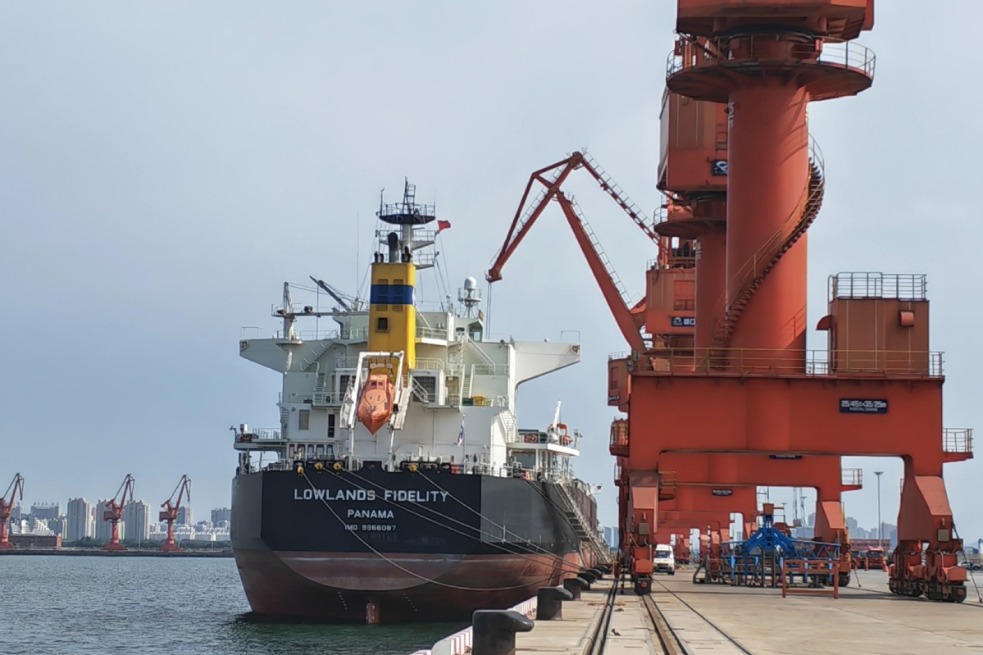China's Asia-Pacific moves much more peaceful than US


In the evolving geopolitical landscape of the Asia-Pacific region, the dynamics of international relations are constantly in flux. The joint statement issued by the United States, Japan and the Republic of Korea at the recent "Trilateral Indo-Pacific Dialogue" and China's response to it offer an insight into the complex interplay of regional power politics.
China has remained a proponent of peace, emphasizing the importance of adopting a regional approach to settling differences without the interference of non-regional countries. Dialogue and consultation are the only way to manage, even resolve, differences between countries.
The concerns the joint statement raised over China's claim in the South China Sea and the allegations it made against China (including accusing China of "escalatory behavior") were firmly rebutted by Beijing. To be sure, Beijing's response is not merely a matter of diplomatic posturing but also deeply rooted in the country's broader vision for the region — a vision characterized by peace, stability and cooperation.
China's economic endeavors and cultural impact have positioned it as a key player shaping the dynamics of the region. This role is distinct from that of the United States, which often appears to adopt a combative stance, heavily influenced by traditional power dynamics. In contrast to the US, which is often viewed as an outsider exerting its influence on the region, China has always made efforts to preserve peace, and promote collaboration and cooperation, strived for unity and collective progress.
When it comes to the South China Sea, for China, it is not just a place through which the country's strategic maritime routes pass but also an essential part of its maritime domain. As opposed to the confrontational approach of the US and its two allies, China advocates using peaceful dialogue and consultation to resolve disputes, in line with international laws and conventions, notably the United Nations Convention on the Law of the Sea.
Moreover, China sees the formation of such trilateral groupings as a step toward creating exclusionary blocs — a move that it argues is counterproductive to the collective goal of regional peace and stability. China favors inclusivity and multipolar cooperation over alignments that more often than not are aimed at building power blocs reminiscent of the Cold War-era days. This shows China wants to help build a world order in which no single country or coalition dictates the rules of engagement.
On the Taiwan question, Beijing's position is clear. The one-China principle is the bedrock of its foreign policy. For Beijing, any external interference in the Taiwan question or support for separatists on the island is a violation of the one-China principle and a challenge to the country's sovereignty and territorial integrity. From Beijing's viewpoint, the key to maintaining peace and stability across the Taiwan Strait is the unwavering adherence to the one-China principle.
China's response to the trilateral dialogue and the joint statement reflects its larger vision for and deep understanding of the region. The Asia-Pacific, as seen by Beijing, is not a battleground for geopolitical contests but a region for cooperation and development. This view is totally different from the strategy of forming alliances and blocs, which, according to China, only serves to heighten tensions and create divisions.
China's call to abandon the Cold War mentality is a significant aspect of its international relations. Instead of forming alliances and blocs, which often lead to tensions and conflicts, and shift people's attention from common threats such as deteriorating global governance and worsening climate change, China promotes a new type of international relations marked by mutual respect, cooperation and shared benefits — and aimed at maintaining long-term peace and prosperity in the region.
China's emphasis that the regional players make more efforts to maintain peace and stability underscores its vision of a multipolar world order, in which the international community operates on the basis of equality and collective decision-making, and all countries, regardless of their size and national strength, contribute to shaping the regional and global narratives.
China's response to the US-Japan-ROK joint statement reflects a nuanced interplay of its principles, national interests, and vision for a fairer and equitable regional and global order. At its core, China's stance is about safeguarding its sovereignty, fostering cooperation and helping build a balanced, multipolar world order.
As the Asia-Pacific region continues to emerge as a key geopolitical arena, understanding these perspectives becomes essential for navigating the complex currents of international relations. And the path to stability and prosperity in the region passes through mutual respect, constructive dialogue, and a commitment to the principles that prioritize peace and collaborative growth. China's advocacy of the Pacific vision stands as a testament to its commitment to these ideals, enriching the discourse on regional geopolitics.
The author is the founder of the Friends of Belt and Road Initiative forum and an adviser to the Pakistan Research Center under Hebei Normal University, China.
The views don't necessarily reflect those of China Daily.
If you have a specific expertise, or would like to share your thought about our stories, then send us your writings at opinion@chinadaily.com.cn, and comment@chinadaily.com.cn.

































